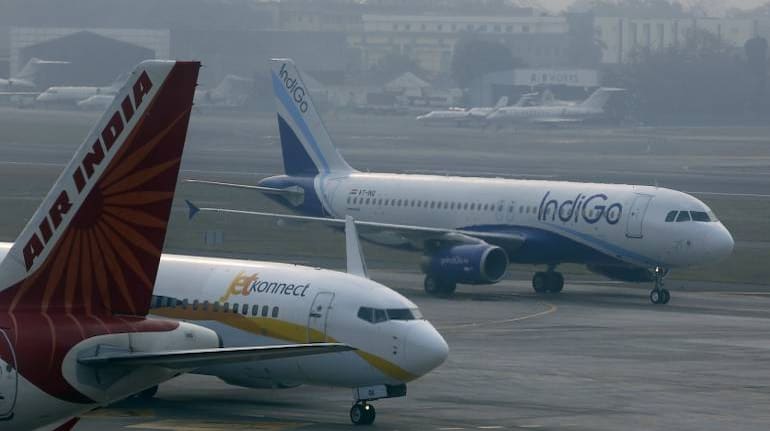



The ambitious regional connectivity scheme UDAN (Ude Desh Ka Aam Nagrik) has been a middling success at best, with more than half the awarded routes yet to start service and many among those operationalised falling off the aviation map as they become unviable when viability gap funding (VGF) ended in three years. In any case, less than one in 10 domestic fliers took a UDAN flight last fiscal, putting a question mark on the scheme which was launched to increase connectivity between small towns and cities.
When it was launched in 2016, UDAN was hyped as the first-of-its-kind scheme anywhere in the world, designed to jump-start India’s regional aviation market by improving the viability of unserved and underserved regional routes through a self-financing and market-based mechanism. Since then, the scheme has seen multiple editions. Recently, the contours of UDAN 5.0 were unveiled.
Making Small Towns Accessible
While UDAN has undoubtedly put some non-functional and under-served airports on the national aviation map. The genesis of UDAN lay in putting more airports across the country to use. India has close to 400 airports and airstrips but only about one in four airports were operational till 2016. Before UDAN, domestic air connectivity was synonymous with flights between the big metro cities such as Mumbai, Delhi, Chennai, Hyderabad, Bengaluru and Kolkata. There were hardly any options for travelling from smaller cities to state capitals, let alone any flights between two or more smaller cities within a state.
So, the launch of UDAN was a welcome move, since it aimed to breathe life into hundreds of airports which were lying unused.
But the targets set under the scheme have been consistently underachieved. According to the Parliamentary Standing Committee, which examined the demand for grants of the Ministry of Civil Aviation for 2023-24, only 467 of the 1,152 routes awarded till February 13 this year were operationalised. In FY23, till December 31, 2022, only 40 of the 90 targeted regional routes had been operationalised and just about 20 lakh passengers used UDAN flights to reach their destination against a target of 30 lakh. This compares poorly when domestic carriers flew over 13 crore passengers in 2022-23 or more than a crore every month.
Under UDAN interested airline operators were expected to assess demand on their preferred routes and bid for these. To keep airfares affordable on UDAN routes, the government had capped fares on a certain number of seats per aircraft and offered Viability Gap Funding (VGF) for these seats. In lieu of VGF, the operators were also expected to offer a certain minimum number of flights per week with the fare cap; they were also allowed time-bound exclusivity on select routes. But the VGF support to the operator was made available for three years only.
Design Flaws
So why have so many awarded routes remained non-operational? The reasons varied, according to a government report. In some cases, airports and heliports were not ready to start operations due to unavailability of land and infrastructure; on some routes, airlines found operations unviable and either ceased flights after some time or did not start at all; and on many others, demand had not recovered significantly enough after the COVID-19 pandemic.
Design flaws in the UDAN scheme have also contributed to its lacklustre performance. To begin with, data regarding flights, routes and airports were kept .under wraps. The government did not share the specific annual number of routes awarded, the number of routes that attracted any bids, the routes operationalised and those that remained operational even after the VGF ended. In the absence of data, potential bidders have lost the confidence to come forward and take risks.
Secondly, the scheme was designed in such a fashion that the small commuter airlines (SCA), a category created specifically for UDAN flights, mandatorily have to operate small aircraft. When routes these airlines bid for became unviable, these small aircraft were left idle as finding slots for them at metro airports was next to impossible. As a result, many SCAs folded up in the last six years because of poor load factors on UDAN routes and the inability to use aircraft. Many scheduled airlines - Air India, Alliance Air, SpiceJet, IndiGo and erstwhile Jet Airways - have also bid for some UDAN routes in the past but many of these routes have subsequently withdrawn.
Scheme Revamp
The government, on its part, tried to introduce many changes to UDAN with the unveiling of new editions to make the scheme attractive. In the first and second editions, bidding airlines were allowed to choose or construct routes, as judging the viability of routes and airports was the airlines’ responsibility. In UDAN 3.0, state governments and the tourism ministry proposed some routes and offered commensurate concessions to bidders to start flights.
To make UDAN more successful, the government needs to not just increase the VGF component but also allow easy exit for airlines which have operated a route for three years with VGF but found it unviable. Also, more state governments will need to step up with concessions in airport charges and underwriting seats, making it compulsory for government officials to take UDAN flights. After all, no airline, big or small, can continue to bleed on UDAN routes.
Sindhu Bhattacharya is a journalist based in Delhi who writes on a range of topics in business and economy. Views are personal, and do not represent the stand of this publication.
Discover the latest Business News, Sensex, and Nifty updates. Obtain Personal Finance insights, tax queries, and expert opinions on Moneycontrol or download the Moneycontrol App to stay updated!
Find the best of Al News in one place, specially curated for you every weekend.
Stay on top of the latest tech trends and biggest startup news.